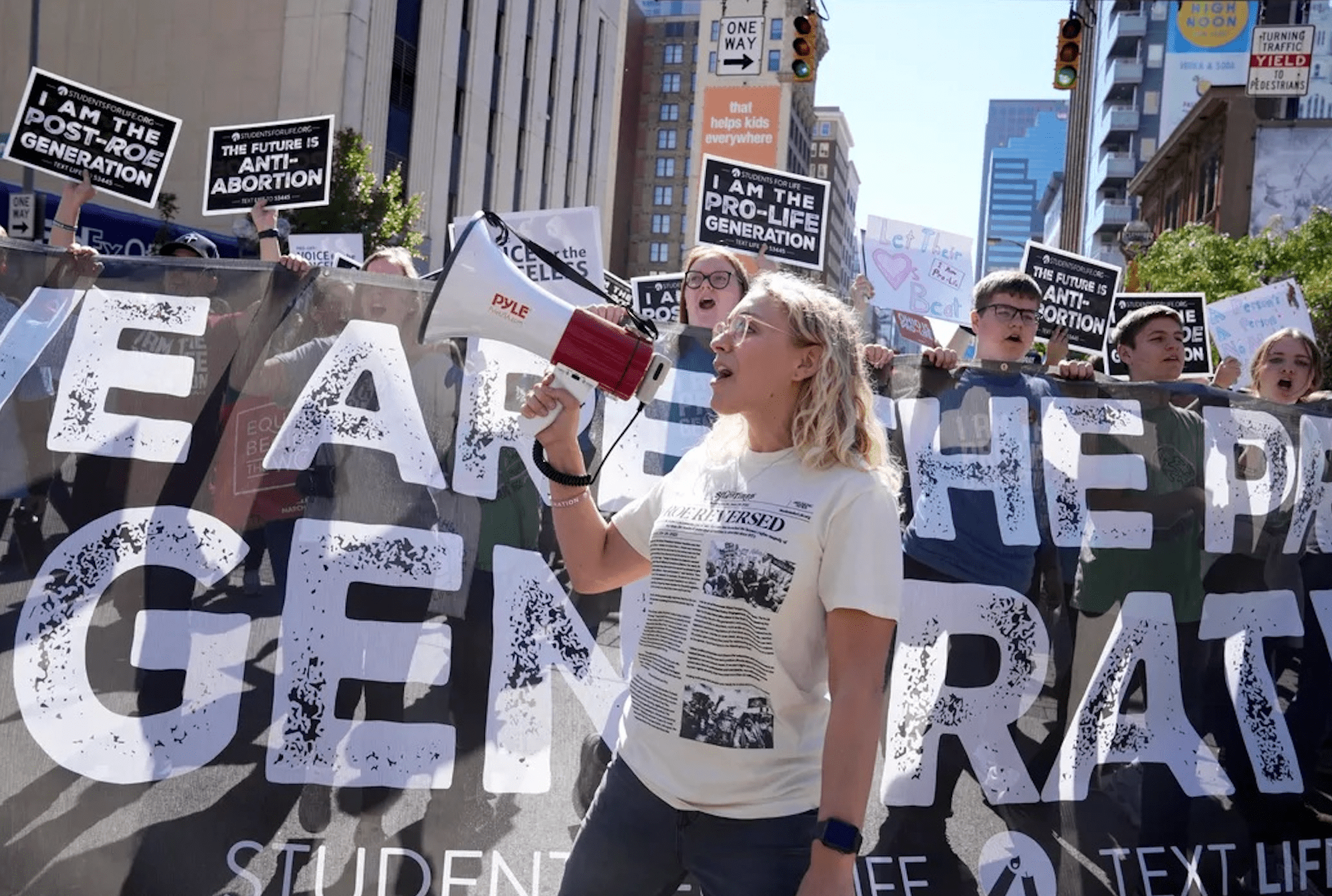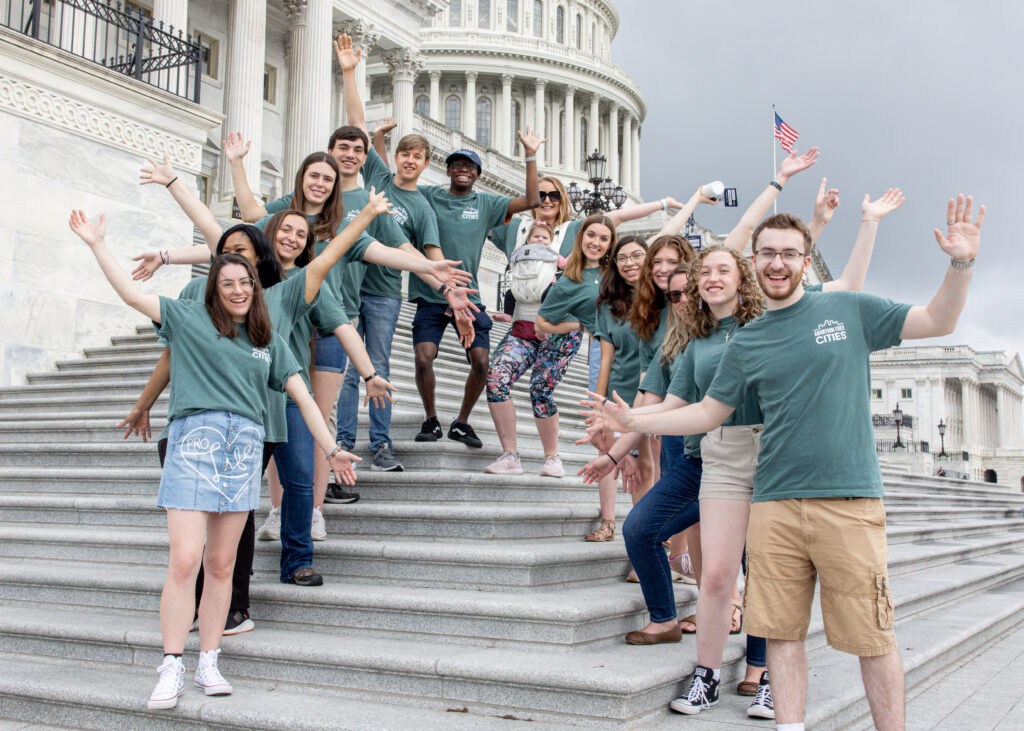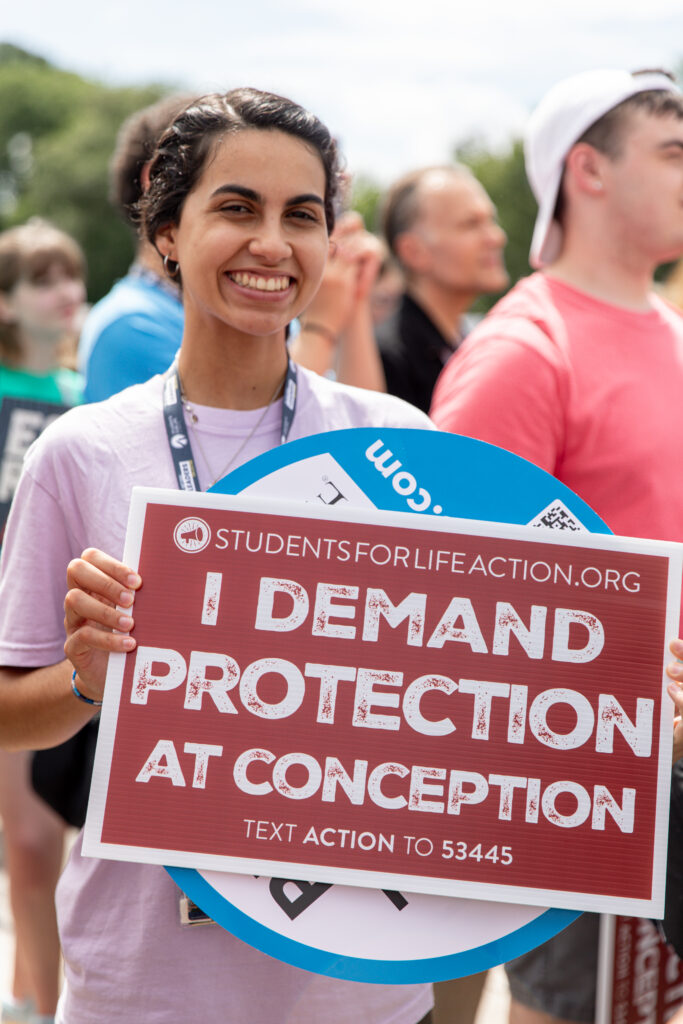
One of the most unique and distinctive characteristics of Students for Life of America/SFLAction is our ability to be a bridge between pro-life political operations and movements who do not understand the mind and preferences of Gen Z and Gen Y voters and the next generation who need to both understand and buy into a new, life-affirming agenda post-Roe. Standing in the middle is SFLA/SFLAction, working to build an effective framework for true social change on the human rights issue of our day. The Pro-Life Generation is a game changer.
As Students for Life’s Demetree Institute for Pro-Life Advancement has been reporting, what makes an examination of the abortion viewpoints of 18–34-year-olds significant is the fact that they now make up the largest voting bloc at 31% of the electorate. The Pro-Life Generation is poised to carry considerable weight in elections to come. The policy they prefer is likely to become law. This is a demographic growing in its political power and influence, as their voting engagement rises.
In recent years, more young voters showed up at the ballot box. Known for their tracking of young voters, the Tufts Center for Information & Research on Civic Learning and Engagement (CIRCLE) reported half of the youth vote turned out in 2020, an 11 percent increase from 2016. Looking at those two cycles, no states saw a decrease in turnout, with only Louisiana’s youth vote remaining the same.
CIRCLE also notes that abortion is the issue that most influences that cohorts’ voting behavior.
Researchers reported: “We find that young voters were the only age group to cite abortion as the issue that most influenced their vote; 80% of youth who want abortion to be legal voted for a Democrat; and 89% of youth who want it to be illegal voted for a Republican.”
In the last presidential election, the Youth vote strongly favored Democrats.
Pew reported in 2021, “A yawning age gap in voter support – a pattern that emerged in the 2004 presidential election for the first time since 1972 – continues to be evident, with voters under 30 favoring Joe Biden by 24 percentage points (Biden 59%, Trump 35%).
But in 2022, the New York Times noted “that 27 percent of 18-to-29 voters cast ballots in midterm elections — and that 63 percent of them voted for Democrats in House of Representatives elections.”

While the advantage was to the Democrats, about 4 in 10 went a different direction, and as more than 70 percent sat out, energizing newly motivated voters is key.
Presidential voting years always draw more attention. In his Washington Post column titled Why abortion is not the silver bullet that Democrats need in 2024, Ruy Teixeira, senior fellow at the American Enterprise Institute said that other factors often play a larger role, including party affiliation. “Next fall, more peripheral voters will return to the voting pool. These voters are more likely to be younger, more likely to be non-White, more likely to be working-class and, critically, less ideological about issues, including abortion rights,” Teixeira observed (Emphasis added).
They also are profoundly unimpressed with Biden and the economic ruin he created with “Bidenomics.” Cue the Miley Cyrus song, “I came in like a wrecking ball.”
Spiked reports, “Even Donald Trump, who lost the youth vote overwhelmingly in 2020, has spied an opportunity in courting the young. He is running neck and neck with Joe Biden in current polls”.
In an election cycle in which margins are razor thin, getting out the Pro-Life First Youth vote can be a game changer. CIRCLE calculates a large and available cohort, noting: “ In the next presidential election, 40.8 million members of Gen Z (ages 18-27 in 2024) will be eligible to vote, including 8.3 million newly eligible youth (ages 18-19 in 2024) who will have aged into the electorate since the 2022 midterm election. These young people have tremendous potential to influence elections and to spur action on issues they care about—if they are adequately reached and supported by parties, campaigns, and organizations.”
How big a change could a fraction of those almost 41 million make in the next election? Consider NPR’s analysis of Biden’s win over Trump. They reported: “The tight races in the trio of states had a big electoral impact. As NPR’s Domenico Montanaro has put it, ‘just 44,000 votes in Georgia, Arizona and Wisconsin separated Biden and Trump from a tie in the Electoral College.’” Just a little over 10 percent of those new voters could turn the tide.
An increase in voters motivated by the human rights issue of our day, combined with potential voter dropouts has the potential to swing many races.
Importantly, on the issue of abortion, young voters are turned off by the abortion extremism permitted by the Democratic Party’s policies – demanding abortion through all 9 months, taxpayer funded, without conscience protections for medical professionals, and even shutting down state efforts to pass laws.

In the SFLA/Demetree Institute/YouGov poll earlier this year, more than 6 in 10 youth voters said they wanted limits on abortion. And MONEY WON’T BUY YOU LOVE: Politicians thinking to buy the Gen Z and Gen Y vote with money for abortions won’t find it a sure thing. On taxpayer funding of abortion, almost twice as many oppose such funding as support it – 40% against to 23% for it, with 26% believing it depends, and 11% undecided. Visit the Demetree Institute for Pro-Life Advancement to explore the Youth Vote’s nuanced positions on abortion and life-affirming alternatives.
SFLAction will be:
- Organizing on-campus voter education and registration
- Setting up teams for campus polling place advocacy
- Managing and Accelerating unique digital and social media campaigns aimed at the youth vote.
- Expanding GOTV efforts among sympathetic audiences, such as local churches
- Creating unique events to raise awareness.
- Initiating unique social media campaigns to combat misinformation/inform on candidates’ voting records.
Bottom line, with more than 1,400 groups in all 50 states — and counting — SFLAction efforts to energize committed, young pro-life voters will set up a life-affirming coalition for years to come as well as provide a potential pivotal impact in the next election cycle. Greater pro-life engagement from the about 40 percent open to a pro-life/more conservative point of view can lead to game-changing victories.
ADDITIONAL READING ON THE SFLAction BLOG:
Donald Trump is Right – The Youth Vote IS Up for Grabs, But Not Just Because the Economy is Terrible
Youth Vote Ohio Exit Poll: Students for Life Action’s Exit Polling Indicates that for those Opposing Ohio’s Issue 1, which Allows for Unlimited Abortion, that Abortion Extremism was Key to Winning Their Vote
Yes, We’re Coming for Your Vote – The Great PRO-LIFE Ballot Chase of 2024
Students for Life Action Launching Our STOP ABORTION EXTREMISM TOUR
